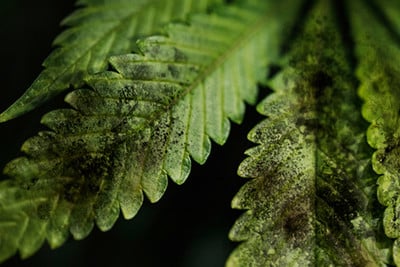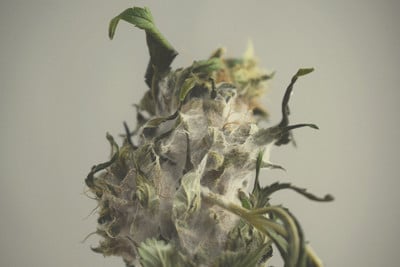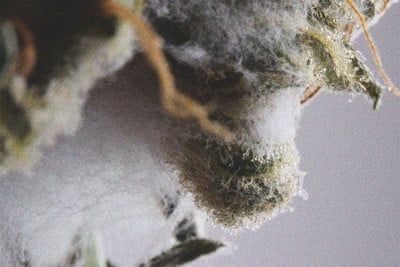.

Killing Mould On Medical Cannabis: Is Irradiation The Future?
Cannabis flowers should be free of microbes, parasites, and mould, especially when produced for medical users. Irradiation is a controversial issue among cannabis consumers, yet it is considered a safe process for food and herb decontamination. How does irradiation impact cannabis—not to mention humans?
From the micro-grow up to the commercial operation, mould and bud rot are a main concern of any cannabis grower. Recognising the early signs of a mould infestation, and knowing how to prevent it, is perhaps one of the most crucial skills a grower needs to learn. Prevention is the best way to keep cannabis clear from infestation, and for sure it’s easier than trying to cure an infected plant. Treating mould and bud rot is tough work, and most of the time it’s better to simply remove and destroy infected plants.
Smoking or vaping mouldy cannabis flowers can be harmful and must be completely avoided. However, a tiny amount of potential pathogens might be contained even in properly dried, “clean” cannabis flowers—the same goes for vegetables. The inhalation of what remains of some of these organisms is perfectly tolerated by a healthy stoner, but those who use cannabis for medicinal purposes, or who have a compromised respiratory system, might be more at risk for developing health issues. That’s where the irradiated cannabis debate comes in.
THE POST-HARVEST PROCESS OF IRRADIATION
The safety of food and herb irradiation has been debated for decades. When food is irradiated, high-frequency alpha or gamma rays kill E. coli, salmonella, and other microbes, as well as parasites and moulds. The United States first approved irradiation for food products in 1958, and for many years this process has been deemed safe by the World Health Organisation. Food irradiation is permitted by over 60 countries, but not on just any kind of food. Dried herbs, spices, potatoes, onions, wheat, and fresh and frozen ground beef are among the most commonly irradiated foods. Regulations usually state that irradiation shall not be used as a substitute for hygiene and good manufacturing or agricultural practices, and that radiation levels should be kept as low as possible.
MEDICAL CANNABIS MICROBIAL SAFETY STANDARDS
Pharmaceutical regulations specify that medical cannabis derivatives must comply to strict standards regarding microbial contamination. European, US, and Canadian standards for inhaled medical preparations require that certain pathogens, such as mould, are completely absent. Unfortunately, it’s not possible to grow and process cannabis plants under completely sterile conditions, nor keep contamination levels below the required limits.
Decontamination of medical cannabis is thus deemed a necessity, and the only option is to use ionising radiation because other decontamination treatments would alter the chemical content and texture of the flower. Nevertheless, many patients claim that cannabis products treated by irradiation have a different taste or effect, pointing to a change in the original biochemical content.
From the commercial medical cannabis grower’s standpoint, irradiation is often viewed as an irreplaceable way to ensure a safe and clean end product, even if a few of them claim they don’t require this process to secure contaminant-free cannabis.
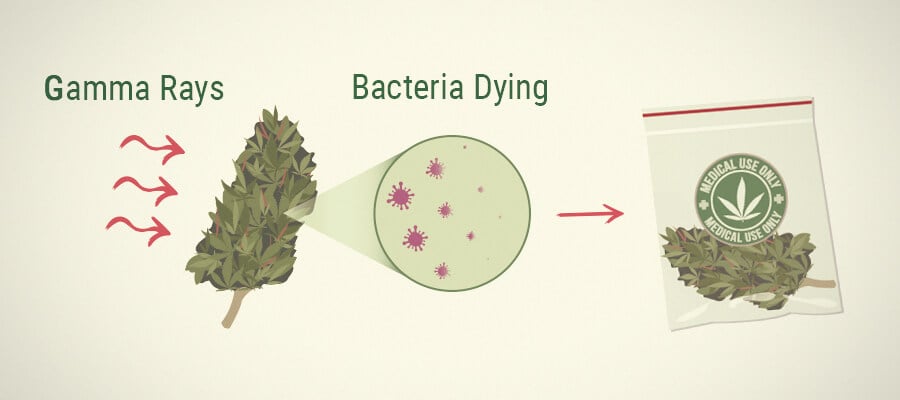
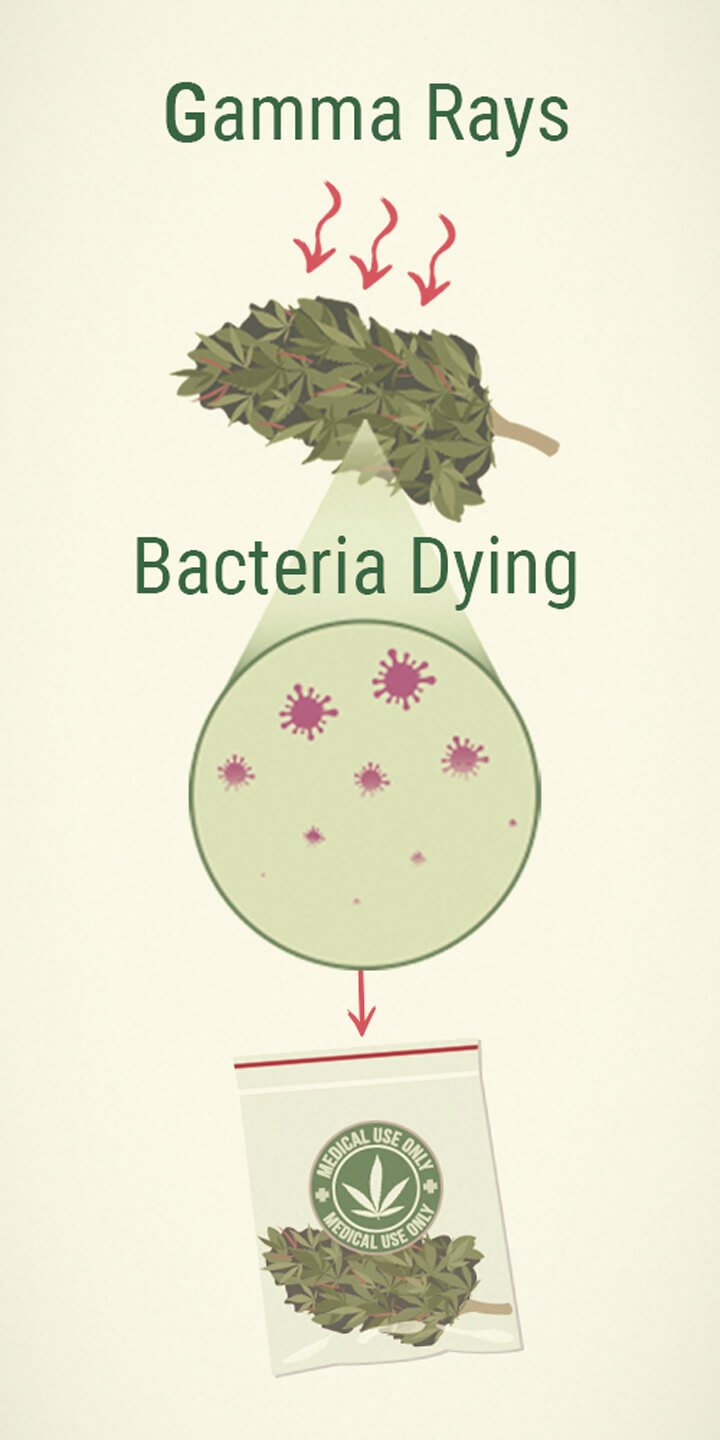
A COMPROMISE BETWEEN RISKS AND BENEFITS
Almost all of the major cannabis brands officially approved for medical use employ irradiation. However, some patients argue that irradiated cannabis might not be as safe and effective as completely “natural” bud. And while it’s unlikely that irradiation is enough to adversely interact with our DNA or fundamental bodily processes, could it damage the terpene or cannabinoid content within cannabis flowers, thus altering the flavour and effects?
A study by cannabis researcher Arno Hazekamp, and commissioned by Dutch medical cannabis producer Bedrocan, evaluated the effects of irradiation[1] on different cannabis varieties with a reliable methodology. Dried flower samples were analised before and after a standard gamma-irradiation treatment. The irradiation didn’t change the general terpene profile, yet it slightly reduced the content of some terpenes. No reduction or alteration in THC or CBD content, humidity, or physical structure was observed. That said, this study is not without its flaws, and it will probably be a while before you start seeing home-growers irradiating their cannabis.
Current data supports the use of this highly regulated industrial process for medical cannabis flowers, at least until other, more advanced methods have been developed and implemented. Dan Sutton, founder and CEO of licenced BC cannabis producer Tantalus Labs, estimates that irradiation is used by about 80% of licenced Canadian cannabis cultivators to meet the stringent guidelines imposed by the Public Health Agency. The same trend is happening in Europe, while the improvement in hygienic standards for cultivation and processing is reducing irradiation levels to a minimum.
It doesn't appear that properly irradiated cannabis is unsafe, so there's probably no reason to worry about smoking it, and also no reason not to keep improving our home-growing technique and environment while we wait for more advanced methods to become accessible.
- Evaluating the Effects of Gamma-Irradiation for Decontamination of Medicinal Cannabis https://bedrocan.com


























